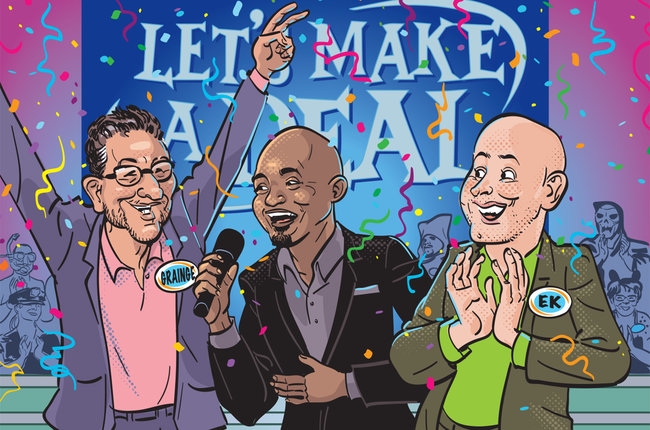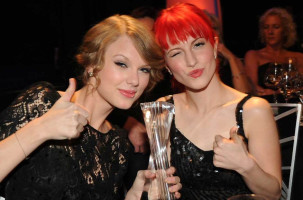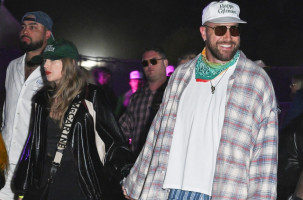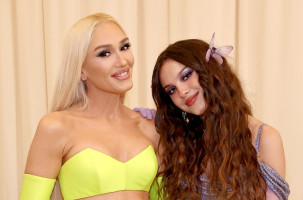During the last two years, Spotify and Universal Music Group's negotiations for a long-term licensing agreement gradually turned into media-business brinkmanship. UMG chairman/CEO Lucian Grainge knew that Spotify was under pressure to go public, which would be hard to do without label deals -- and that Spotify co-founder/CEO Daniel Ek needed to reduce royalty payments to show investors the potential for profit. And as streaming became the dominant means of music consumption, UMG, like other labels, needed the service to convert more users of its controversial free tier into the subscribers that are fueling the recovery of the recorded-music business.
"It was like the U.S. and Soviet Union during the Cold War," Peter Paterno, a partner at King Holmes Paterno & Soriano, tells Billboard. "Mutually assured destruction."
Thankfully, no one ever pressed the button: UMG's music remained on Spotify, even without a long-term deal. But no one really backed down, either. Instead, the two companies seem to have struck a deal that gives each side what it needs, even if neither one managed to dictate all of the terms.
"This feels like a very reasonable deal in that Spotify gave the labels the ability to window" -- to restrict albums to the service's paid tier for a limited time -- "and in exchange got the discount they needed," says Jonathan Daniel, a partner at Crush Music, which manages Sia and Lorde, among others.
Under the agreement, the share of revenue Spotify pays labels in royalties, currently thought to be 55 percent or slightly more, will instead in most circumstances range between that level and about 52 percent, depending on what subscription targets the company hits, according to sources with knowledge of the deal. (The actual pact is more complicated, involving different royalty rates for different countries and circumstances.) On the other hand, UMG artists will be able to limit their albums to the paid tier for two weeks after release -- although singles will be available for free -- a concession that Spotify had previously declined to offer.

For a while, label executives have whispered that negotiations took so long because Ek was reluctant to make any changes to the company's free tier. But he became more willing to compromise -- sources have hinted that Spotify general counsel Horacio Gutierrez played a key role -- and the deal couldn't wait much longer. Under the company's March 2016 debt agreement, if Spotify didn't go public by last month, its interest rate would rise by one percentage point every six months, and it would be required to give its lenders equity on better terms. With a UMG deal in hand, Spotify, which has been valued at $8 billion, has a powerful incentive to go public in the coming months. A successful IPO would benefit the major labels, which have equity in the company, although executives now consider the revenue it -generates to be far more important. Moreover, the financial success of Spotify would help labels by driving investment -- and competition -- in the online music world.
Spotify still needs to broker long-term deals with Sony Music Entertainment, Warner Music Group and the independent label community. It's not close to a deal with SME or WMG, according to label sources, and the sticking point is -- what else? -- money. "Spotify needs to reduce its split [of revenue that goes to labels] in order to have an IPO, and we get that," says a label source, "but why would we do a deal that's meaningfully worse?"
Locking in a deal with UMG gives Spotify more leverage with other labels since it doesn't need all of those deals to go public. And UMG, which accounted for 35.7 percent of the U.S. recorded-music market in the first quarter of 2017, according to Nielsen Music, often sets the pattern for the structure of digital deals. "This may be the beginning of something that's going to be an industry standard," says Russ Crupnick, managing partner of the consultancy MusicWatch.
The ability to limit music to Spotify's paid tier may no longer be as valuable as it would have been a year ago, however. Prominent Spotify holdouts like Adele and Taylor Swift didn't initially make their albums available on the service, but fans are quickly getting out of the habit of purchasing music -- even as downloads. "I don't think it's going to be used for many releases other than the biggest artists," says Elliot Groffman, a partner at Carroll Guido & Groffman. "The focus should be more on a push to limit free."
UMG's deal could do that -- although removing albums from Spotify's free tier will also drive some listeners to Apple's iTunes, or piracy -- since it allows the service to decrease its royalty payments only if it hits certain subscriber numbers. "The deal incentivizes them to increase the number of subscribers instead of solely growing the free tier," says a label source. "If they're scaling, artists are making more money and labels are making more money."
With varying degrees of enthusiasm, the rest of the industry will probably follow -- even if some labels hold out for a while. "Universal is the one that can call the shots, to some extent," says Mark Mulligan, an analyst at MIDiA Research, "and this is the next stage of how labels and -streaming services work together."
This article originally appeared in the April 15 issue of Billboard.








